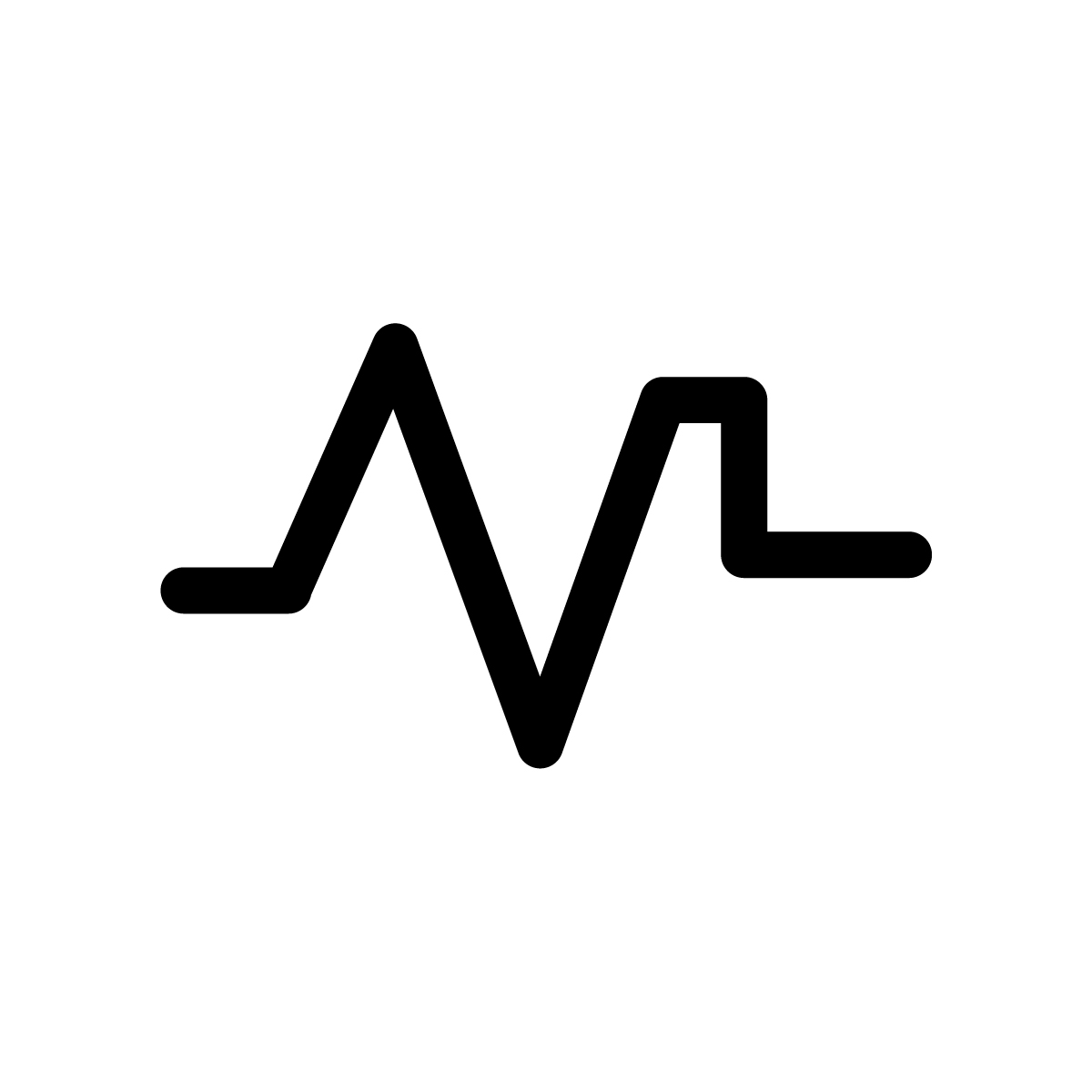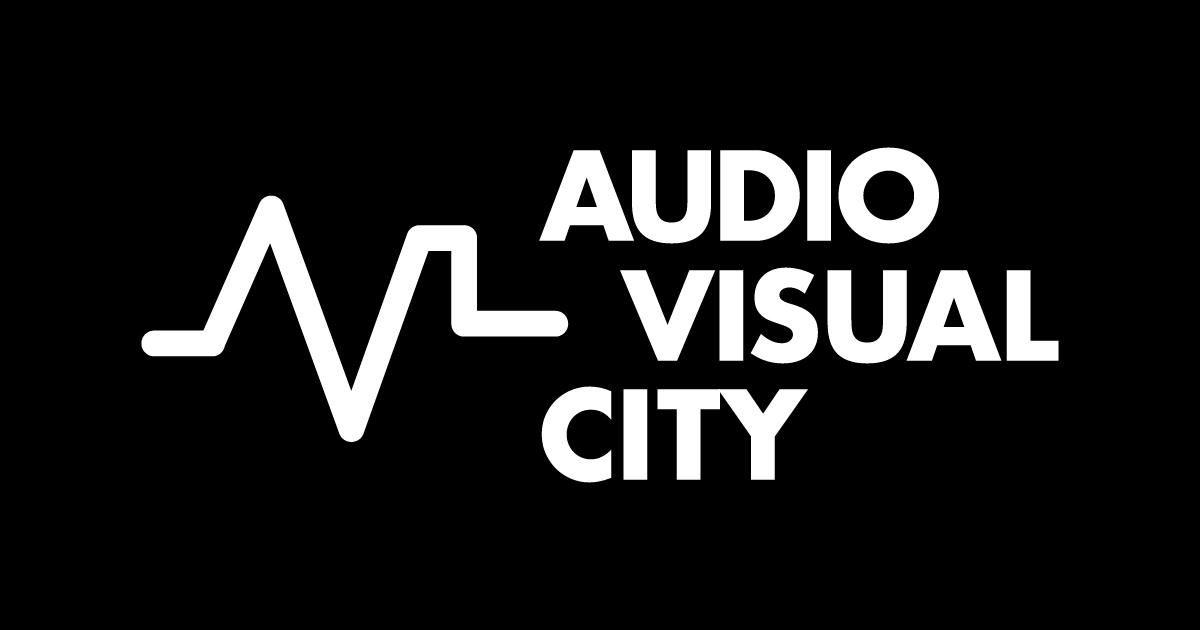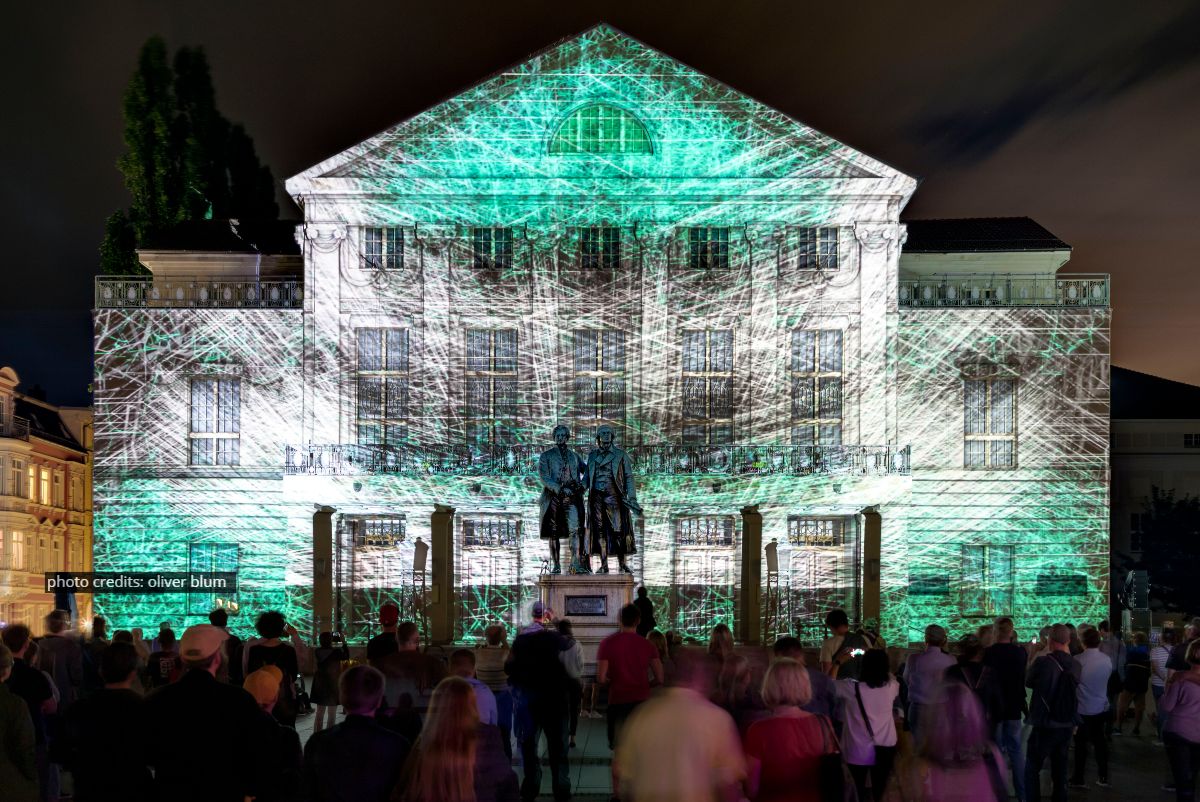Meet ruestungsschmie.de and Soundselektor, the audiovisual artists behind REMAKE³, projection mapping on the facade of the German National Theatre (DNT) in Weimar.
ruestungsschmie.de are absolute masters of the video mapping technique while Soundselektor crafts unique soundtracks intertwined with the visual narrative.
The audiovisual duo has a very analytical and technical approach to the audiovisual art. Their aim is to get as close as possible to the architecture and its role within the urban environment.
The result is a mind-blowing explosion of structural elements hitting hard on the viewer’s senses. Every single element is visually enhanced and undergoes numerous levels of abstractions, constantly oscillating between the architectural and the geometrical.
We had the chance to see their artwork NUCLEUS³ live at Signal Festival 2018. An audiovisual thunderstorm infusing every element of the facade with vibrant life: another of their masterpiece!
As part of our series about the Genius Loci Weimar 2019 winners, our young journalist Marta Minguell asked ruestungsschmie.de and Soundselektor about their creative process and how they approached the audiovisual event open call.
1. Can you tell us about how you constructed the abstract story-line for the visual narrative and the relationship with the sound experimentation?
The graphics are buildings on top of each other, they slowly evolve from simple to complex. The journey is the destination. We visualize our work-process as a part of our creation.
Our work is multi-layered. Each layer describes a fragment of a topic. By adding the layers on top of each other we create a multi-topic collage.
In the first layer, the absolute beginning, we chose the main “topics” to work on graphically. In this case the architecture, the facade composition and the historical and urban context of the Deutsches Nationaltheater Weimar.
Being architects, we believe that the building plays the part of the protagonist. Our main instruments for the visual narrative creation are building plans, sections, 3D-models, satellite images, 2D and 3D geodata, plans and models of the surroundings and finally the landscape of the city itself.
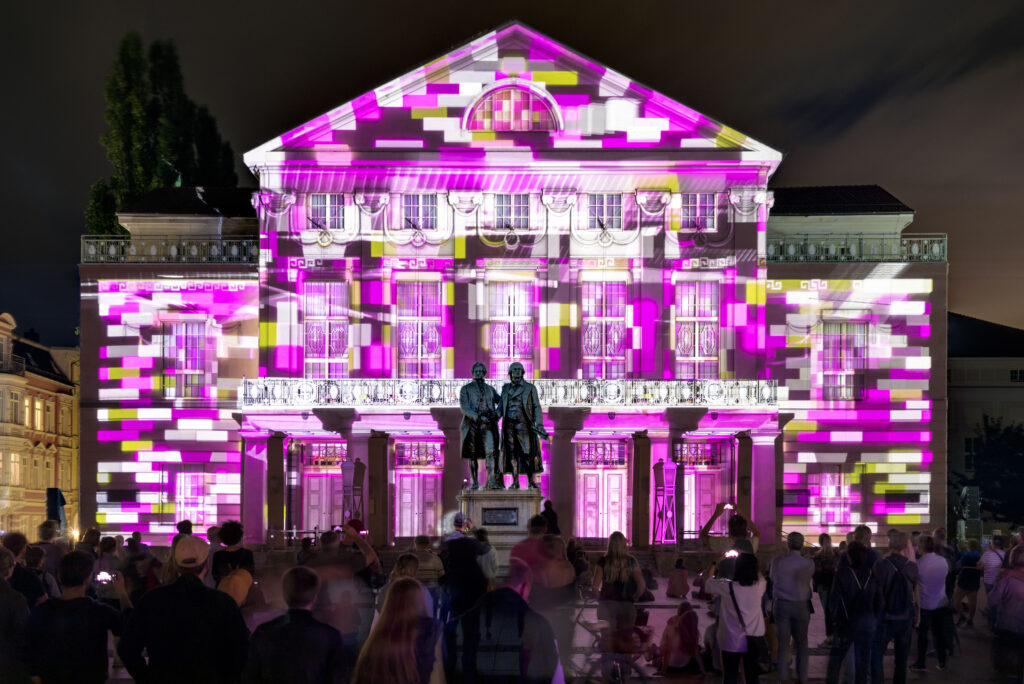
Photo Credits: Oliver BlumIn the second layer we reflect upon the historical, political and social impact of the Nationaltheater in the past, present and future. With this in mind as well as the current political and social development in Germany and Europe we decided we have to make some kind of statement, in using clear font. Finally, the categorical imperative (Kant) and its analogies found in the different world religions seemed to be the right answer.
The third layer is the sound design. Obviously it is important for composing the atmosphere in the visuals. We try to envision what will happen visually. We start working in 2D and 3D.
As soon as we have a rough cut, we send it to Jarii van Gohl / Soundselektor (our sound magician). Then he works on the sound composition and sends it back to us. Then the ping-pong-game starts, by sending back and forth. This goes on until we achieve the desired result.
2. The projection mapping features a great variety of textures and patterns. How did you create them and what tools did you use?
We use very different techniques to create our visuals. We create 3D models from architectural drawings and Geo-data. We also use 2D video footage to create 3D objects importing them in 3D programs. A technique we have been constantly working on and refined over the years.
We also use different techniques offered by video editing software like DaVinci Resolve and others. For 3D we mostly use Cinema 4D and some known and unknown Plugins.
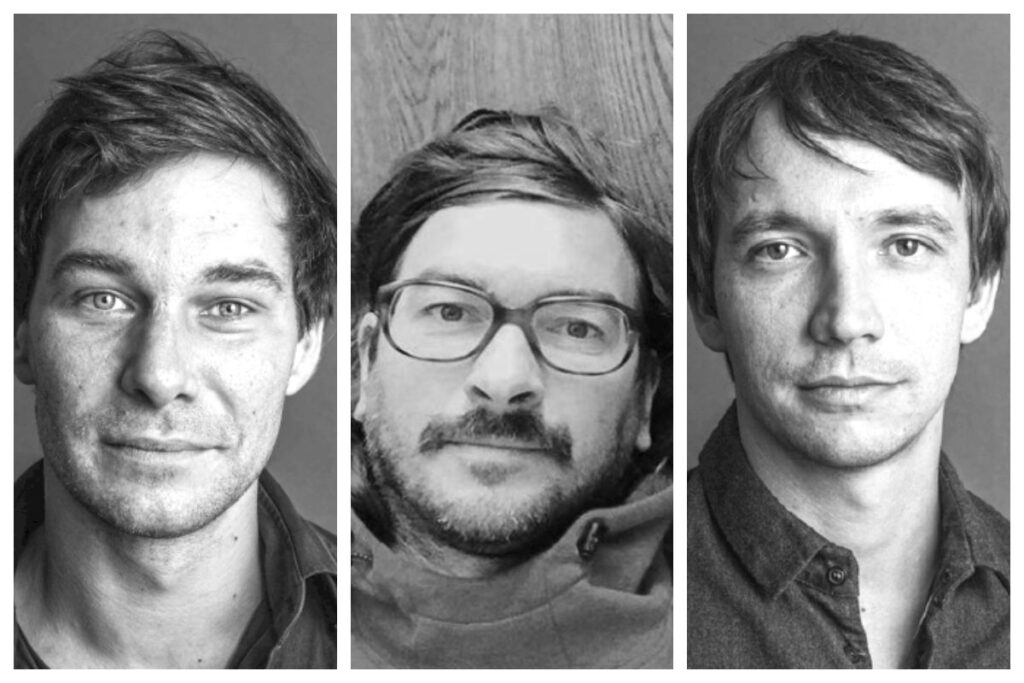
3. Can you share with us your creative approach when submitting an artwork to an open call?
It really depends on the task. First of all we analyze the object and its context. Typically, it is a building. We look at the facade, its specific details, patterns and composition and try to find plans and sections of the building.
We then look at the building’s history, the location within the city and the surroundings. Google Earth is our good friend there. When we can, we try to visit the city and see everything live.
Often there are given topics. Thereafter we start the conversation. Talking and sketching are the main instruments here. We shout out ideas and discuss them. This process leads to new ideas, which are also discussed and the wheel begins to turn. Eventually we find a concept which we can all agree on.
Then the typing starts. We try to formulate our ideas the way an “outside” person would interpret it. Meanwhile the visualization starts. We try to squeeze in as much concept as possible within little pictures.
Finally we work on matching the text and the visuals, which is always a good test for the concept itself. If we cannot connect the written words with the images we created, we know there is a bug and we know what to do. Finally we add some artistic flavors and statements.
Then we win the call, the game begins and a new discussion starts. We love it!
